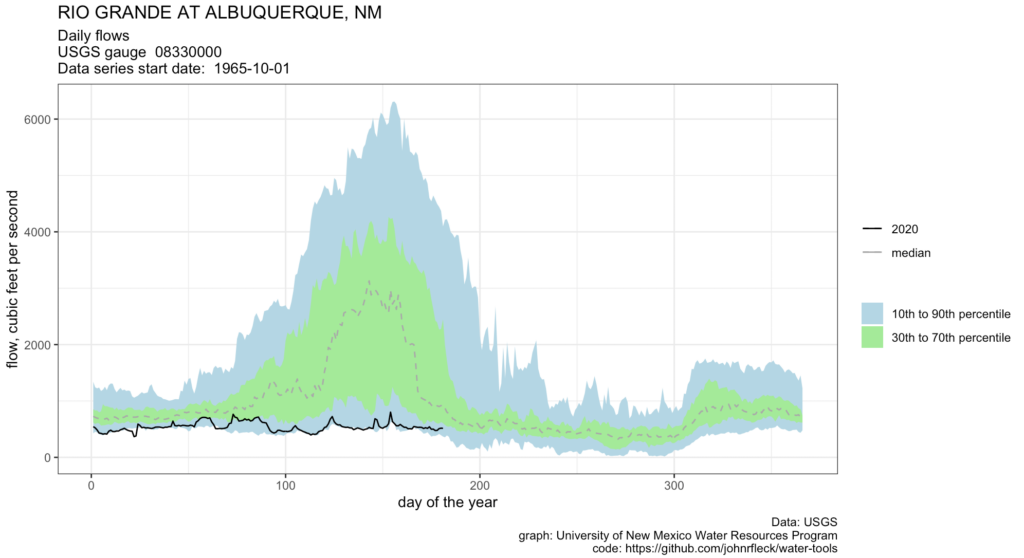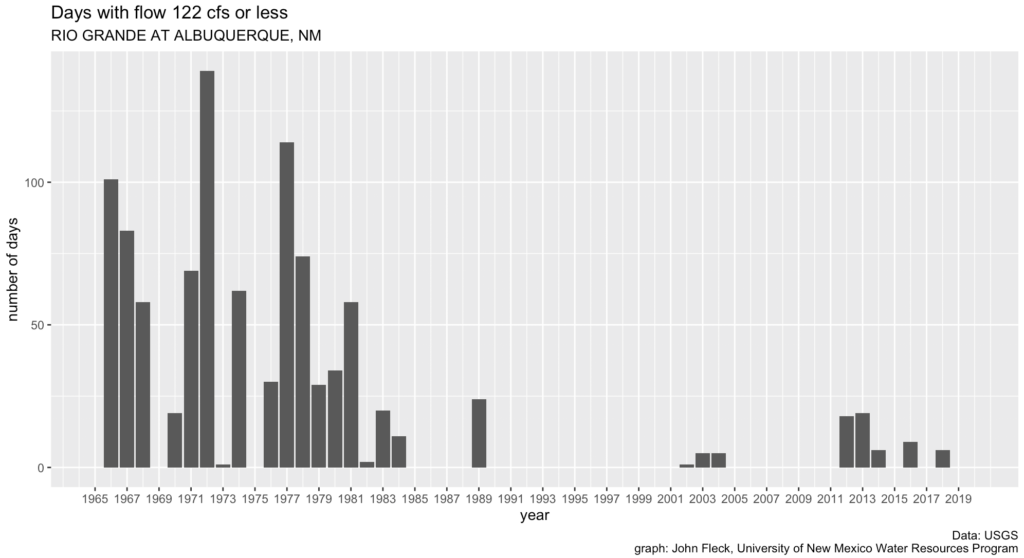
2020: a year with no spring runoff on the Rio Grande
The Albuquerque Bernalillo County Water Utility Authority announced today that it will temporarily stop diverting water from the Rio Grande for our drinking water, shifting entirely to groundwater to meet municipal supplies through the summer. In itself, it’s no emergency for city water supplies – the groundwater is the reserve for use in dry years, when surface supplies are insufficient. But it’s a signal about how truly awful a year this is on the Rio Grande – we’ve done this sort of dry year shift to groundwater before, but as near as I can tell never this early in the year.
We are in the midst of what David Gensler, the water manager for the Middle Rio Grande Conservancy District, told the Albuquerque Journal’s Theresa Davis is “probably the worst we’ve experienced here in at least 45 years.”
The graph above tells the story – the black line is this year, amid an envelope of relative normalcy. We got no appreciable spring runoff peak. None.
Much of the water flowing through Albuquerque right now is water being released from previous years’ storage. Gensler’s Conservancy District will largely have run through that storage by mid-July. With a bunch of decisions yet to be made, including how water stored by the federal government for Native American communities will be doled out, it’s not clear when the bottom will drop out of that already meager flow. But know that it will drop out.
How low matters? It’s an arbitrary question, but for the graph below I chose 122 cubic feet per second, simply because it’s the cutoff point the Water Utility used to inform its decision to suspend diversions and switch to groundwater. How many days per year did the flow drop below 122 cfs?

Low flows in Albuquerque over the last half century. This is data from the Central Avenue bridge.
You can see that most years in the 1960s and 1970s saw many weeks of flows this low at the Central Avenue Bridge in Albuquerque, during a time when far more water was diverted from the river into the irrigation canals that flow through the valley – more water in the main canals, less in the river itself. Low flows in those days were far more common through Albuquerque than upstream of the big irrigation diversions.
Our management philosophy has changed since the 1980s, with a more efficient system of irrigation water delivery leaving far more water in the river itself. But this is an extraordinary year.
I’ll be watching closely to see how many days below 122 cfs we have this year.
